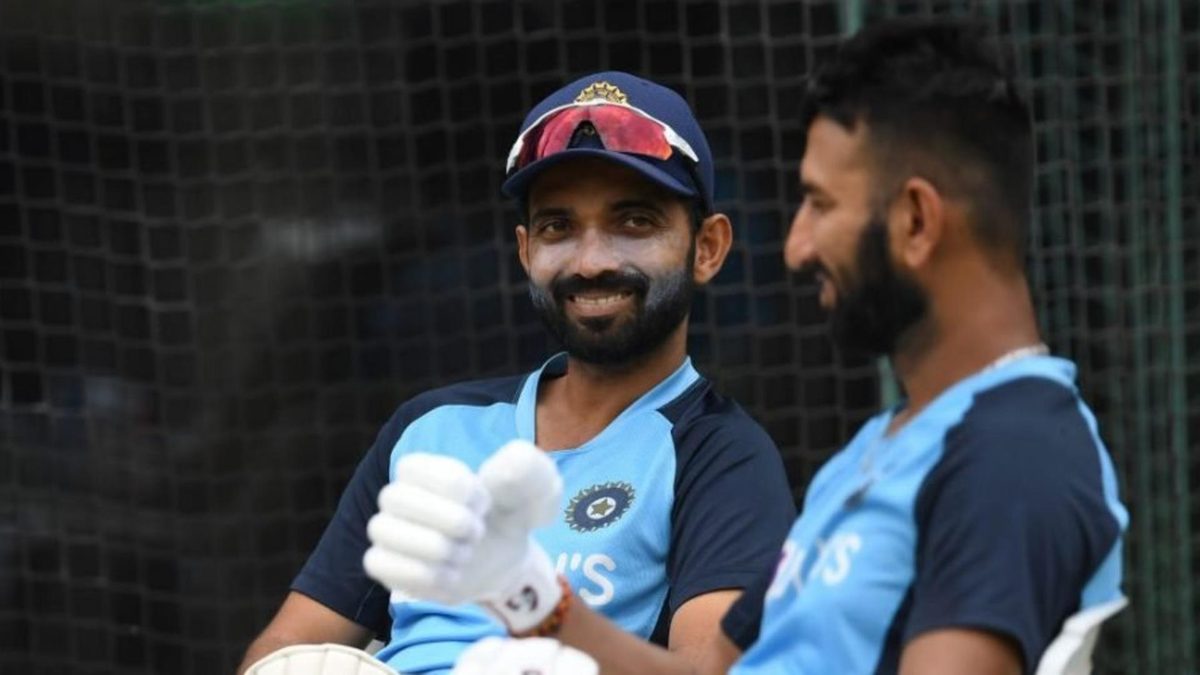
Ajinkya Rahane and Cheteshwar Pujara, two mainstays of India’s Test batting, haven’t exactly lived up to their billing recently. But India’s loss in a hard-fought WTC final shouldn’t be an excuse to make them scapegoats, writes Aadya Sharma.
Subscribe to the Wisden Cricket YouTube channel for post-match awards, player interviews, analysis and much more.
When a match the magnitude of the World Test Championship final ends up slipping away, the instinct is to demand instant change, banish the players that got you there, and start from scratch. This is emotional as much as it is logical, but it’s also powerful. Heroes turn into zeroes in the blink of an eye. Reputations are forged and destroyed.
There is merit, of course, in reflecting on what went wrong, and India are far from a perfect Test side. In the glow of the grandeur of Southampton’s six-day classic, which ended with the Test mace in Kane Williamson’s hands, the fragility of their middle-order was exposed. Just a little more stability would have seen the title shared, but with no half-centurions in the game, India were deserving losers.
Digging deeper, two players present themselves as targets for further scrutiny: Ajinkya Rahane and Cheteshwar Pujara, two mainstays of the side, who have carried on the mantle from Rahul Dravid and VVS Laxman (The Wall and the Australia slayer, respectively), but also two players whose extended lean patches stretched into the final game of the first WTC cycle.
Since his Melbourne masterpiece, Rahane has just one fifty in 13 innings, almost half the length of the entire WTC. Pujara, too, looks a shadow of his usual self, often falling into his own trap of preservation. A batsman who has built a reputation for digging in and constructing big knocks, Pujara has now become a player who does only the first of those jobs. Century-less for 31 months now, he is known for blunting the new ball without building on his own platforms.
With the kind of talent pool India has, there are enough options waiting for an opportunity. Rahane and Pujara are each nearer 35 than 30, and while the fallout from falling at the final hurdle rarely leads to level-headed decisions being made, at the start of a new event, taking stock is worthwhile. Is it time for the duo to make way then?
Indian cricket has often been guilty of acting on impulse, shuffling pieces around for the sake of it when responding to defeat and projecting a one-off loss as a crisis situation. Here’s a team that battled the best line-ups for over two years across different conditions, and ended at the top of the Championship table. The platform was laid well before that, and the side slowly developed into an all-conditions giant, with Pujara and Rahane playing pivotal roles in making the team what it is today.
India lost the final, but the defeat doesn’t suddenly negate their evolution over the past half a decade. And, not long ago, Pujara was the epitome of courage in Australia, absorbing blow after blow on the final day of a riveting series to pull India through. It was a series in which he put together three fifty-plus scores in his last four innings, and he has continued to put up a defiant front and prevent an early wicket from becoming a collapse.
Since the start of 2020, he has played at least 50 deliveries in 14 of his 19 innings and has faced more than a hundred balls on six occasions. India might well hope for more. The runs column remains shallow, but Pujara has still fulfilled an invaluable role, and his struggle to kick on is a relatively new issue. Virat Kohli’s own century-less streak has directed the pressure elsewhere, and the demand for more runs off Pujara’s bat is now more intensified than ever.
Rahane, too, plays the thankless role of No.5, where often the flow of the innings is already laid out. He’s India’s highest run-getter in the Championship cycle, scoring centuries in West Indies, Australia, and India. It can infuriating to see him lose his wicket after a good start, and his big knocks are invariably preceded and succeeded by moderate returns. But baying for blood feels like a forced solution for a ‘problem’ that needs deeper thinking; it’s not easy to find a replacement for Rahane’s versatility, neither is there an immediate need.
Pujara and Rahane won’t play forever, and they will be the first ones to admit that they’ll like more runs off their bat against the red ball. But they are still crucial cogs in India’s Test line-up, a team that is arguably the most complete assembled in the country’s history. Each plays a specific role that they’ve built a reputation around: when they don’t fulfill that responsibility, looking for a long-term replacement would be a fair call. But coming second in a hard-fought WTC final isn’t reason enough to tear up the game plan. Six months ago, the same side was the toast of the nation, and Rahane and Pujara were saviors: they didn’t become heroes overnight, and neither have they become bad batsmen since. One match-winning knock and the brickbats will turn to bouquets in no time. It’s time we stopped giving them such skittish respect.








